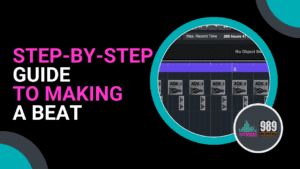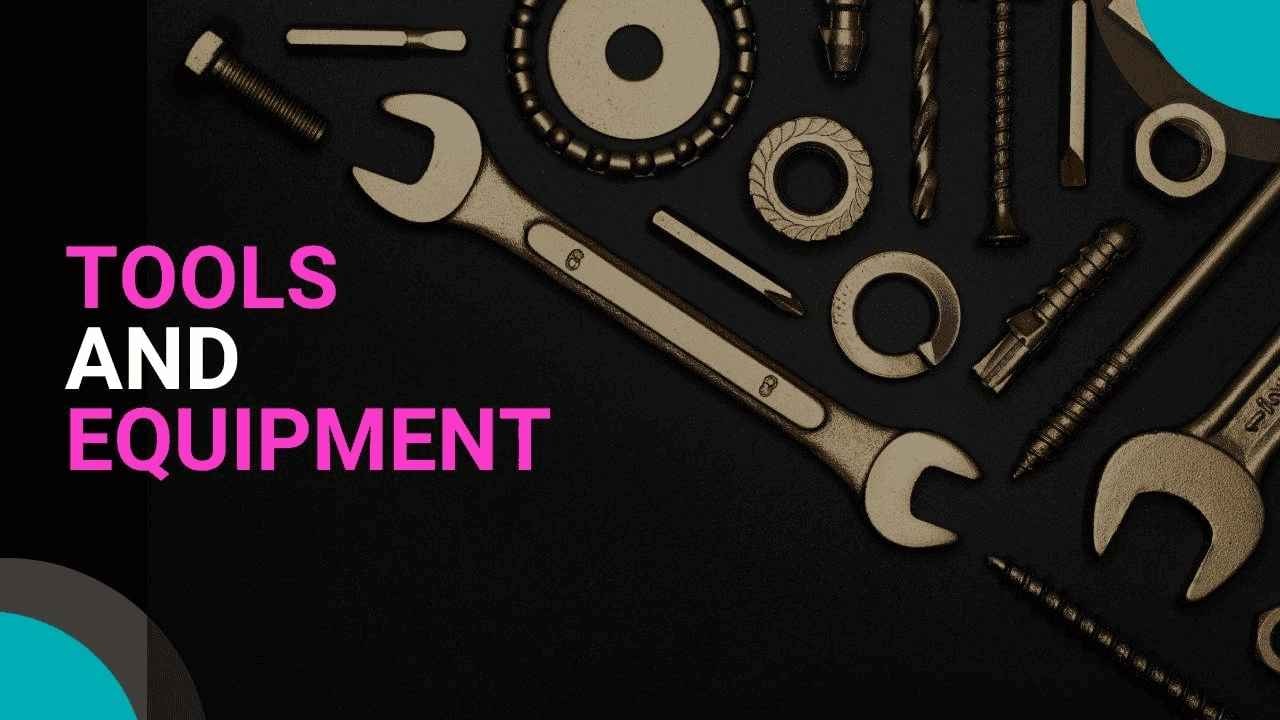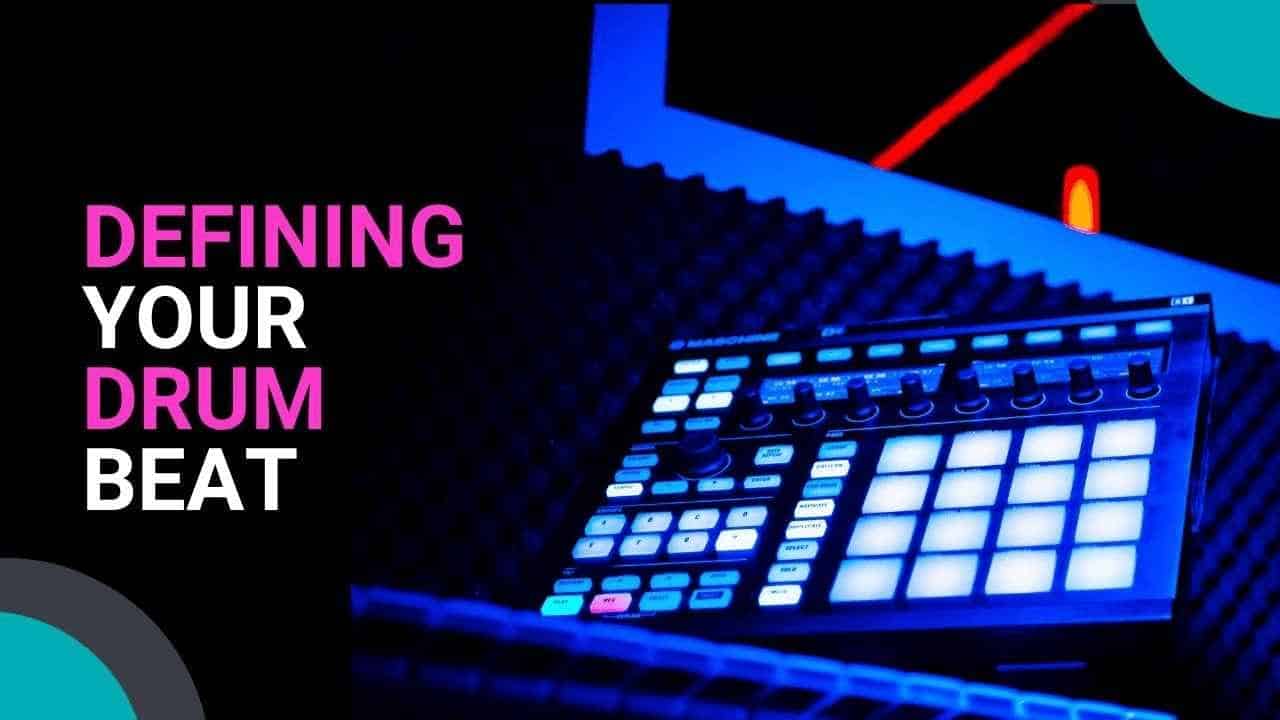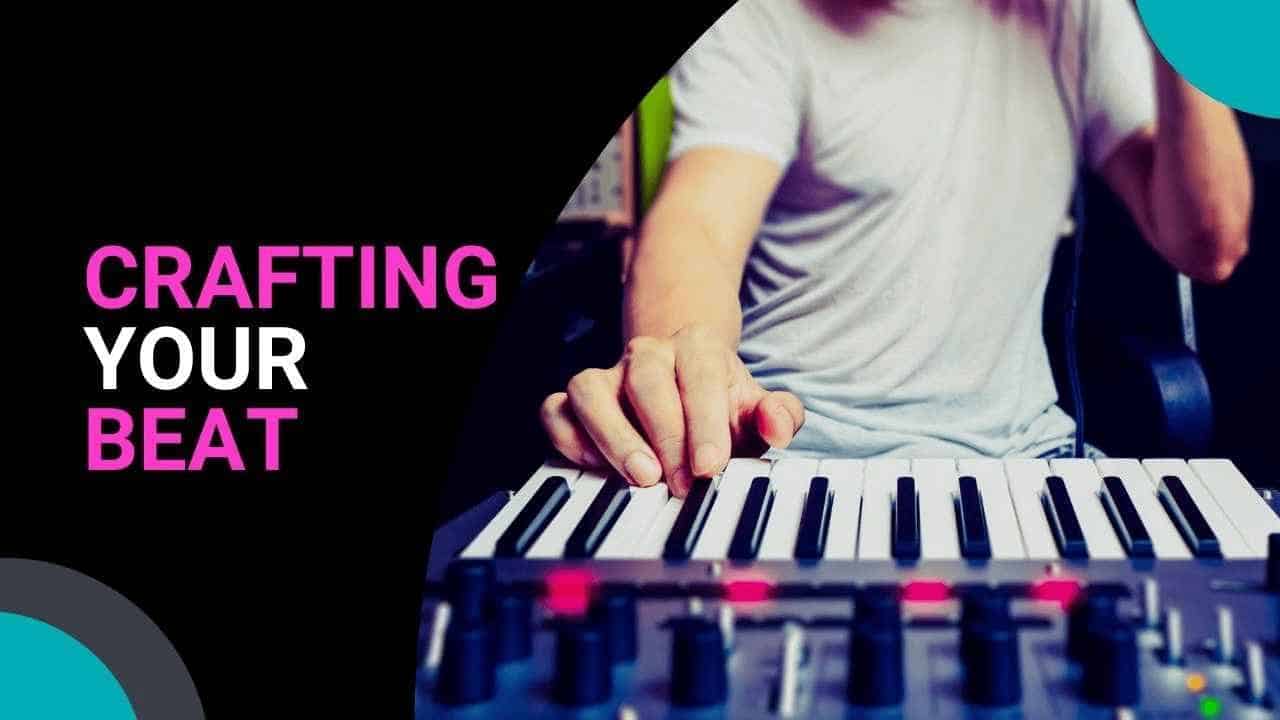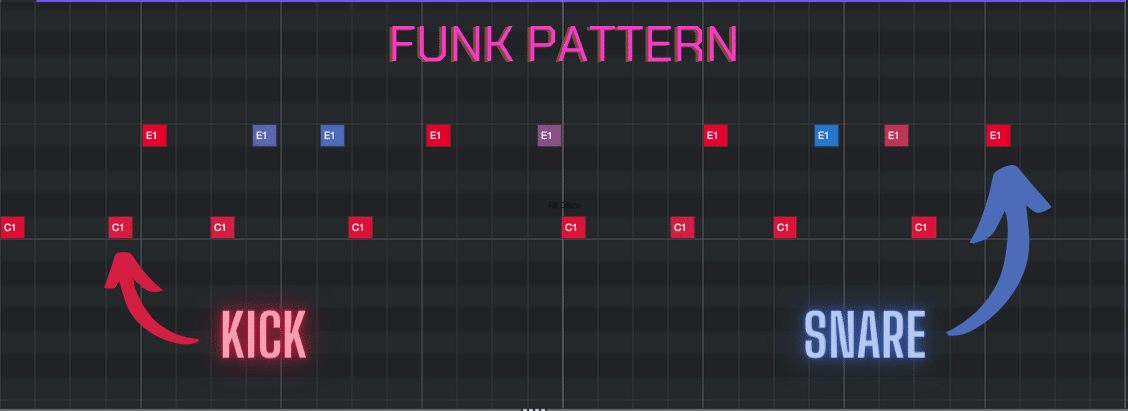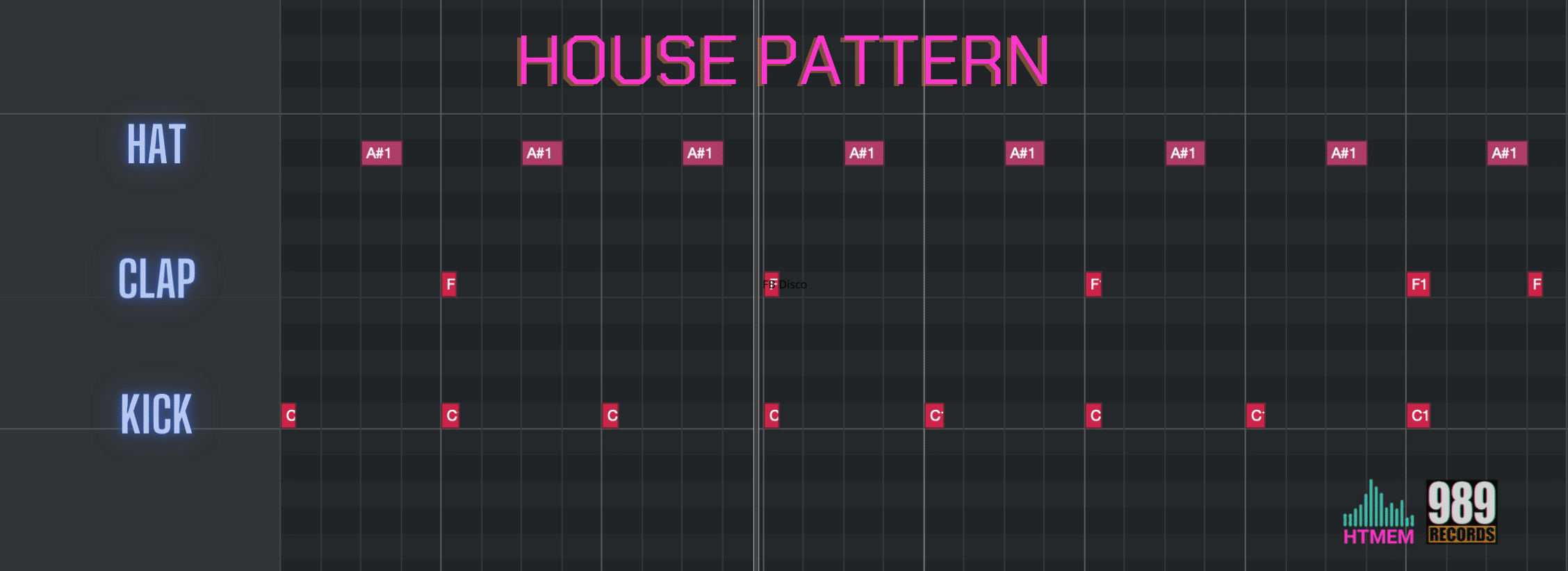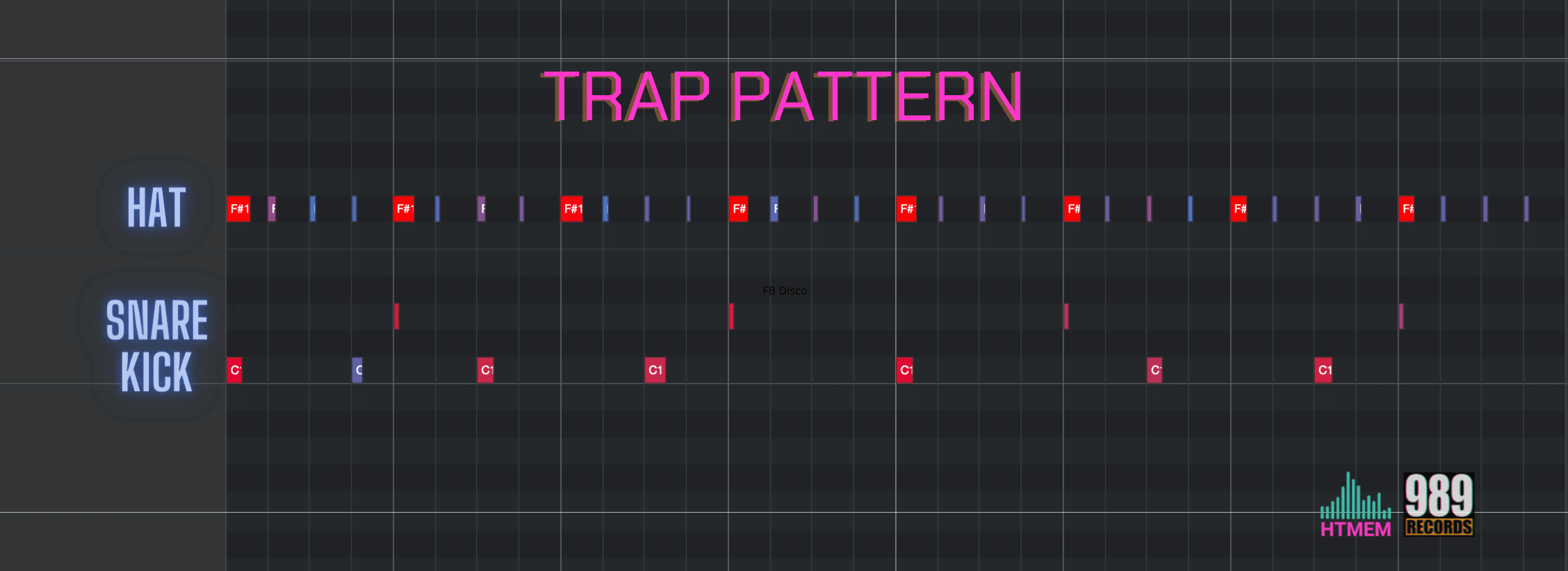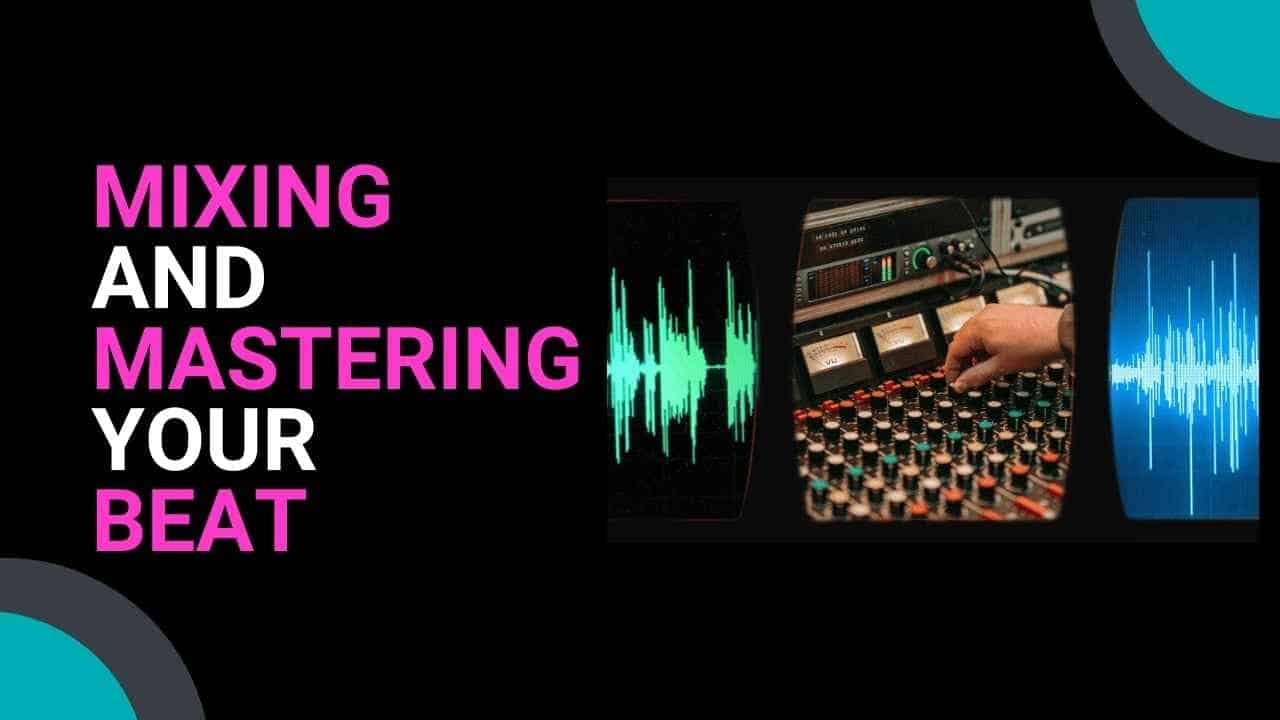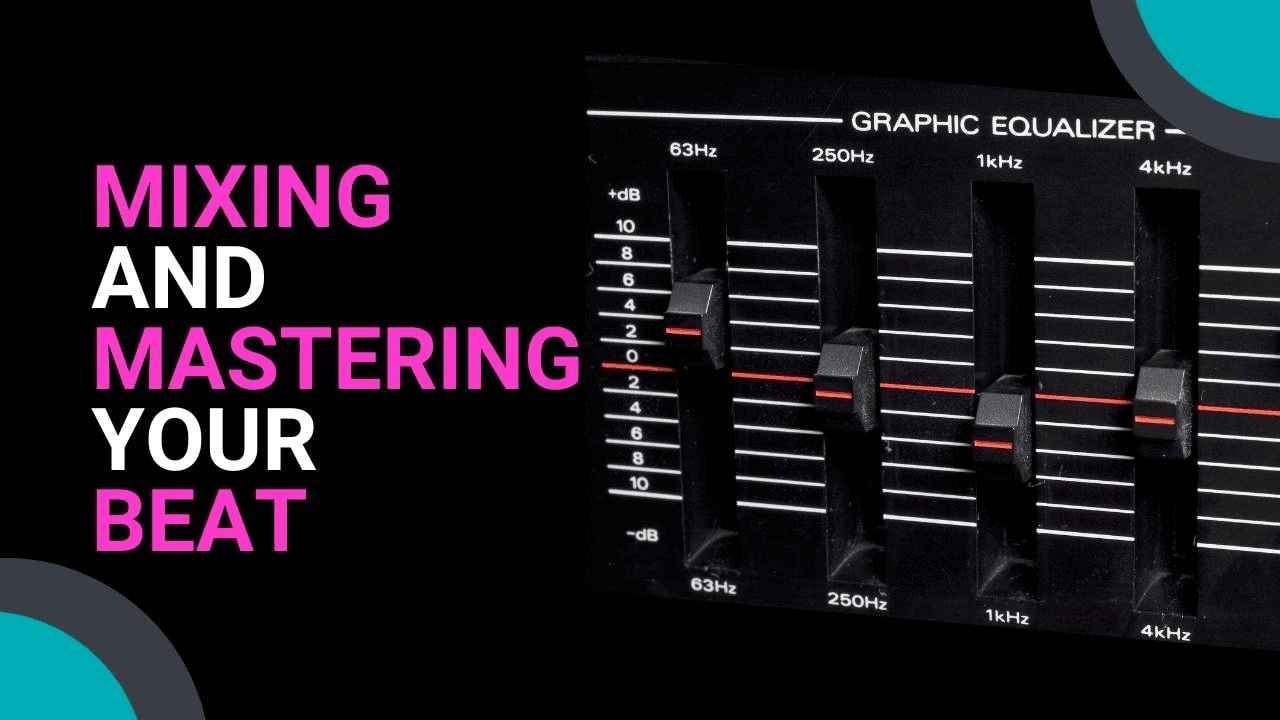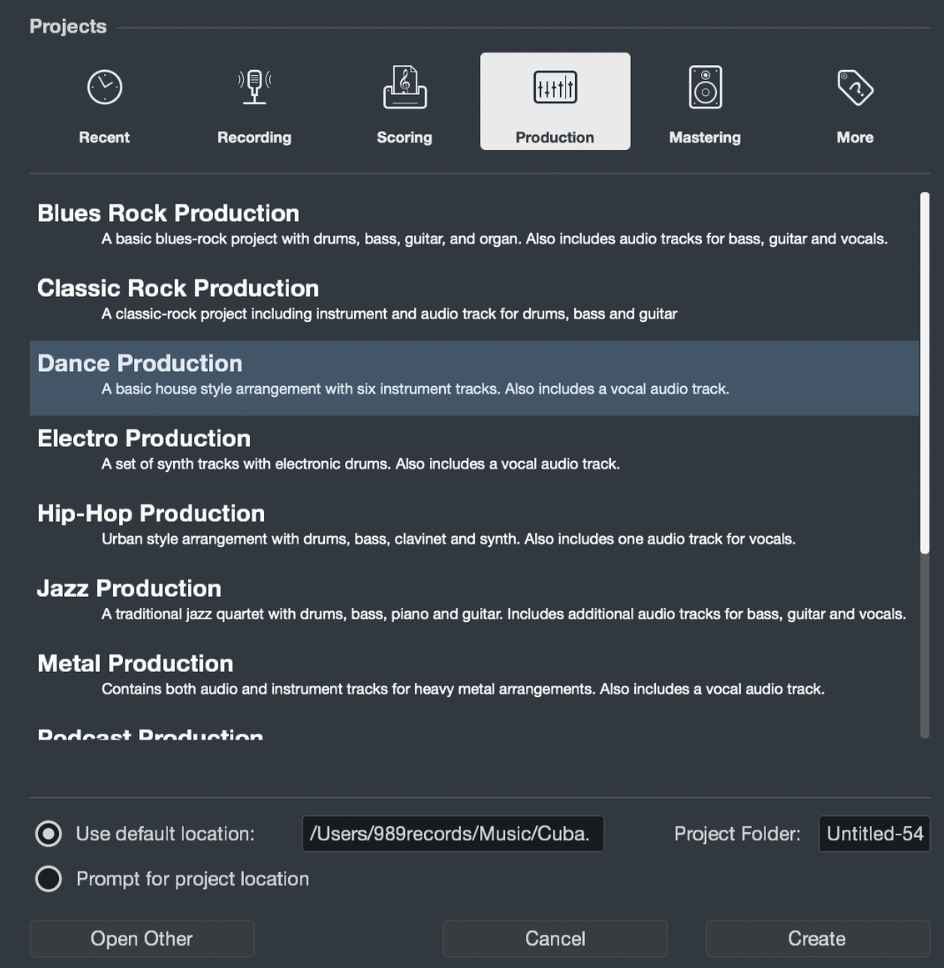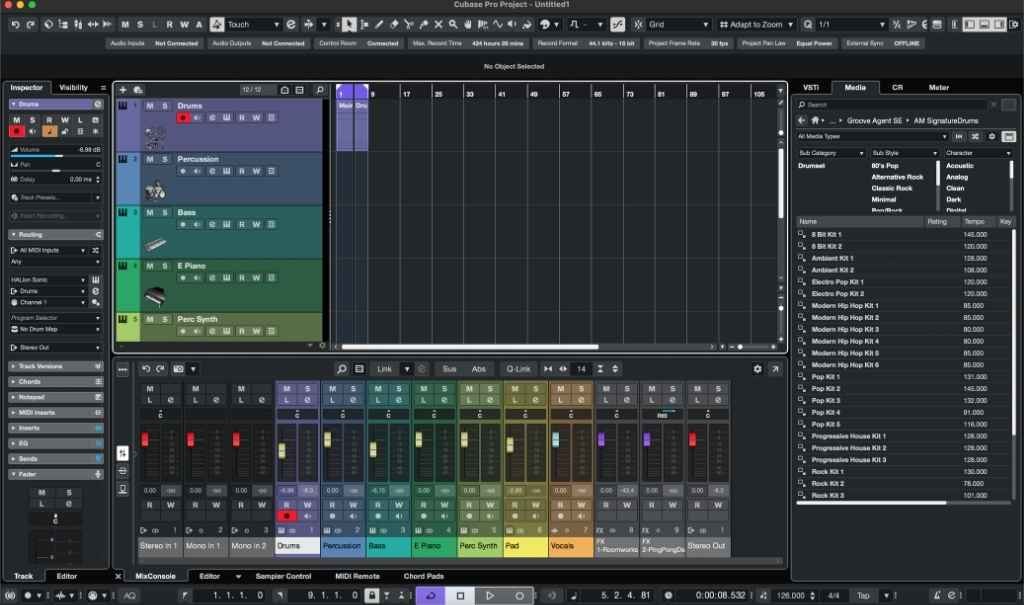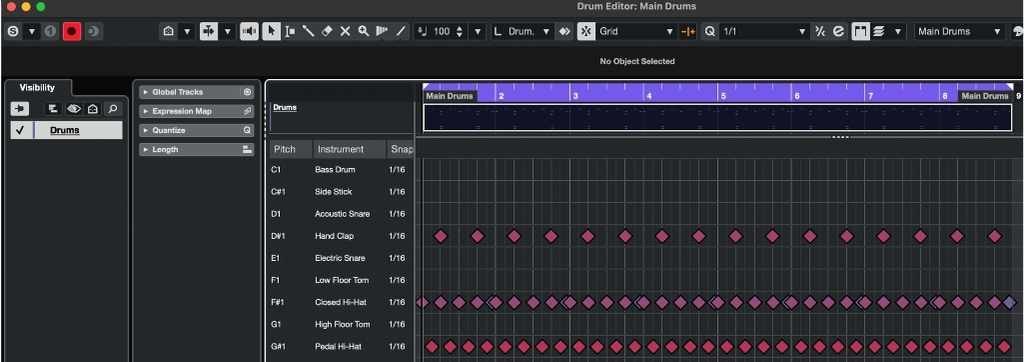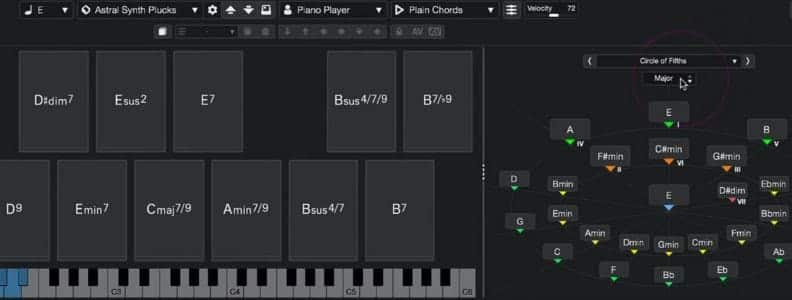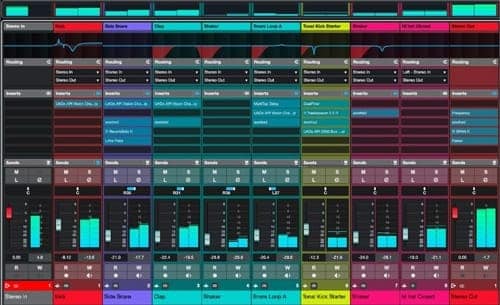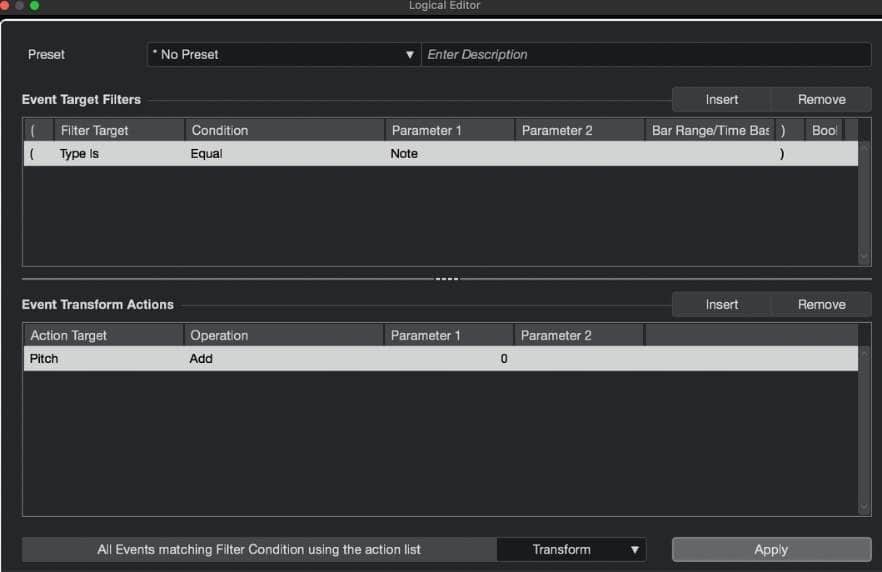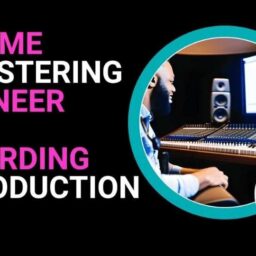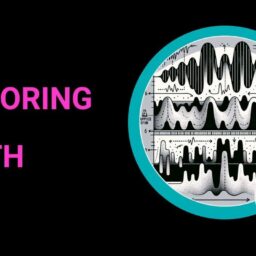Welcome to the exhilarating world of making a beat! In today’s music landscape, crafting your own beats has never been more accessible or rewarding.
With the right tools and a dash of creativity, you can bring your musical ideas to life and embark on a fulfilling music production journey. Are you ready to dive in, explore new sounds, and unleash your inner beat maker? Let’s get started!
In this comprehensive guide, we’ll take you through the entire process of making a beat, from setting up your workspace with essential equipment to mixing and mastering your final track. Choosing the right beat making software is crucial as it can significantly impact your workflow and the quality of your final product.
So buckle up, and let’s unleash your creative potential!
Author Introduction
As a Steinberg Certified Trainer with over 30 years of experience in music production, I’m happy to share my knowledge on how to make professional beats with Cubase. I’ve trained thousands of producers and seen the evolution of digital music production firsthand. This guide combines my hands-on experience with Cubase’s features and my beat making skills to help you make professional beats from scratch. My approach focuses on Cubase’s unique workflow advantages that have made it my DAW of choice for decades of professional work.
Key Takeaways
- Create professional-sounding beats with the right tools, beat making software, and equipment.
- Experiment and collaborate to unlock your creative potential in beat-making.
- Master mixing, balancing levels & applying effects for a polished sound that stands out!
Getting Started with Music Production
What is Beat Making?
Beat making is the process of creating a rhythmic foundation for a song, typically using a combination of drum sounds, bass lines, and melodic elements. It’s a crucial part of music production and can be used to create a wide range of genres, from hip hop beats to electronic music. As a music producer, beat making is an essential skill to master, and can help you to create your own unique sound. Beats are the foundation of any good song, so it’s important to get them right.
Whether you’re crafting the pulsating rhythms of electronic music or the intricate patterns of hip hop beats, beat making is where your music production journey begins. It involves layering various drum sounds, designing compelling bass lines, and adding melodic elements to form a cohesive and engaging track. By mastering the art of beat making, you can develop your own music style and stand out as a music producer.
Tools and Equipment to Make Your Own Beats
Crafting beats requires the right tools and equipment, especially in the realm of electronic music. As a beat maker, your primary workspace will be a Digital Audio Workstation** (DAW)**, which is a software program that enables you to record, edit, and produce music. DAWs are digital representations of physical recording studios that contain multitrack recording capabilities and mixing boards. Choosing the right beat making software is crucial for your workflow and creativity.
MIDI controllers and audio interfaces are also vital components of your beat-making arsenal, allowing you to control virtual instruments and connect your computer with other audio equipment. Experimenting with different drum patterns can help you create unique beats.
Wanna Learn More About the MIDI Protocol? Check out Our Video, “STARTING FROM SCRATCH – Learn the Basics of #MIDI Protocol to Make Your Own Electronic Music.”
With these essential tools in hand, you can start experimenting with different sounds, samples, and effects to create professional-sounding beats and truly express your musical vision. Remember, the music production journey to becoming a music producer is an exciting one, full of discoveries and opportunities to learn and grow in the world of music production.
Next, we’ll delve into this exciting world and further explore these key tools.
Choosing the Right DAW
A Digital Audio Workstation (DAW) is the heart of your beat-making setup, providing you with a powerful platform to record, edit, and produce your music.
There’s a wide range of DAWs available, each with its own unique features and workflow. When looking for a Digital Audio Workstation (DAW) to create beats, there are several popular choices of beat making software. Popular DAWs include FL Studio, Ableton Live, Logic Pro, Pro Tools, and GarageBand.
To name a few…. When selecting a DAW, it’s important to consider factors such as price, compatibility, and your own visual preference. A basic understanding of your DAW’s features and capabilities is necessary to fully utilize it. This will help you get started quickly and maximize your creative potential without becoming frustrated.
So, take the time to explore your chosen DAW, and you’ll be well on your way to crafting amazing beats in no time.
MIDI Controllers: Keyboards and Pads
MIDI controllers are hardware devices that enable you to control virtual instruments and software in your DAW, giving you a more tactile approach to writing a beat.
These versatile tools come in various forms, such as keyboards and pads, each offering unique advantages in beat creation.
For example, a MIDI controller keyboard can help you play virtual instruments more expressively, while pads can provide a more intuitive way to program drum beats and trigger samples. You can also experiment with different drum patterns using MIDI controllers to add variety to your music.
Choosing a MIDI controller that aligns with your needs and preferences is crucial. Look for one with at least 25 keys and 8 pads to give you the flexibility to create your own unique sound.
Remember, the right MIDI controller can significantly enhance your beat-making experience, so take the time to explore your options and find the perfect fit for your workflow.
Audio Interface and Monitoring
An audio interface is a crucial piece of equipment that connects your computer with other audio gear, acting as a bridge between the digital and analog worlds of sound.
It’s essential for capturing high-quality recordings and ensuring a smooth and efficient workflow. When selecting an audio interface, consider factors such as the number of channels, the quality of the microphone pre-amps, and the quality of the DA/AD conversion.
Wanna know more about Digital Signals? Check Our Course: Acoustic, Analog, and Digital Signals Explained.
In addition to a quality audio interface, an accurate monitoring system is vital for successful beat-making. Beat making software plays a crucial role in ensuring high-quality sound by integrating seamlessly with your audio interface. Studio monitors and headphones provide a clear and precise listening experience, enabling you to make informed decisions when mixing and mastering your beats.
By investing in the right equipment, you’ll be well-equipped to produce professional-sounding beats that truly stand out.
Pre-Production and Planning
Defining Your Drum Beat: Inspiration and Mood Setting
Now, equipped with the necessary tools, let’s embark on the creative process of beat-making. One of the first steps in crafting a beat is defining its mood and theme. Experimenting with different drum patterns can help you find the perfect rhythm for your beat.
This will help guide your decisions when it comes to selecting sounds and samples and arranging your beat’s various elements. A clear vision for your beat enables you to create a cohesive and engaging piece of music that resonates with your intended audience.
So let’s explore how to define your beat’s mood and theme and how this can enhance your overall beat-making process.
Establishing a Theme or Emotion
As explained, choosing a theme or emotion for your beat is a crucial first step in the creative process. This can help you make informed decisions when selecting sounds and samples, ensuring that your beat communicates the desired mood and vibe.
To establish a theme or emotion, consider the type of beat you’re making and the purpose it will serve. Is it a high-energy dance track or a laid-back, introspective piece? Different drum patterns can help convey the desired emotion or theme.
Once you’ve identified the theme or emotion you want to convey, you can begin selecting sounds and samples that complement and enhance your vision.
This will help you create a beat that connects with your listeners on an emotional level, making your music more impactful and memorable.
Selecting Appropriate Sounds and Samples
The sounds and samples you choose for your beat play a significant role in shaping its overall mood and theme. To select the right sounds and samples, consider the vibe you want to create and seek out elements that align with your vision. Sample libraries contain collections of sounds that can be used to create beats, such as drums and melodic samples.
Those are the instruments and samples you have to consider:
- Drum samples (Download Our Free Sample Pack)
- bass samples
- synth samples
- vocal samples
- and more
Don’t be afraid to experiment with different sounds and samples to find the perfect combination for your beat. Choosing the right drum patterns is also crucial as they form the backbone of your track. By carefully selecting the right elements, you’ll create a unique and captivating soundscape that truly reflects your artistic vision.
Planning Your Beat
Before you start making beats, it’s essential to plan out your idea. This involves deciding on the tempo, time signature, and key of your beat, as well as the overall mood and feel you want to create. You should also think about the structure of your beat, including the intro, verse, chorus, and bridge. Defining the vibe influences the track’s tempo and genre. Having a clear plan in place will help you to stay focused and ensure that your beat turns out the way you want it to.
Planning is a critical step in the beat making process. By setting the tempo, you determine the speed and energy of your track. Choosing the right time signature and key will help you create a harmonious and rhythmically consistent beat. Additionally, defining the structure of your beat, such as the intro, verse, chorus, and bridge, will provide a roadmap for your creative process. This pre-production planning ensures that your beat is cohesive and aligns with your artistic vision.
Setting Up Your DAW
How to Set Up Cubase for Beat Making
Cubase is a popular digital audio workstation (DAW) that’s widely used in music production. To set up Cubase for beat making, start by creating a new project and setting the tempo and time signature. Then, create a new track and add a virtual instrument, such as a drum machine or synthesizer. You can also add a MIDI controller to control your virtual instruments and create a more hands-on beat making experience. Finally, set up your audio interface and monitor speakers to ensure that you’re getting the best possible sound.
Setting up Cubase for beat making is a straightforward process that sets the stage for your creative work. Begin by launching Cubase and creating a new project. Set the tempo and time signature to match the mood and style of your beat. Next, add a new track and load a virtual instrument, such as a drum machine or synthesizer, to start crafting your sounds. Integrating a MIDI controller can enhance your workflow, providing a tactile and intuitive way to interact with your virtual instruments. Lastly, ensure your audio interface and monitor speakers are properly configured to deliver high-quality sound, allowing you to make precise adjustments during the beat making process.
Follow these steps to be well-prepared to dive into the beat making journey, creating professional-sounding tracks that showcase your unique musical vision.
Crafting Your Beat: Rhythm, Bass, Chords, and Melody
With your mood and theme defined, it’s time to start crafting your beat. A great beat comprises four essential elements.
- Rhythm
- Bass
- Chords
- Melody
Each component plays a vital role in creating a captivating and engaging piece of music. In this section, we’ll guide you through the process of building your beat, focusing on each of these core elements and offering tips and tricks to help you create a truly amazing track. Experimenting with different drum patterns can also significantly enhance your beat, adding variety and depth.
Understanding the roles of rhythm, bass, chords, and melody in beat making equips you to craft an outstanding beat that resonates with your audience.
So, let’s dive into each of these elements and explore how they come together to form a complete beat. < iframe width=”560″ height=”315″ src=”https://www.youtube.com/embed/9Rs8B0MCS00?si=7Lj3bZUuQ-oRHq3l” title=”YouTube video player” frameborder=”0″ allow=”accelerometer; autoplay; clipboard-write; encrypted-media; gyroscope; picture-in-picture; web-share” referrerpolicy=”strict-origin-when-cross-origin” allowfullscreen>< /iframe>
Building a Solid Drum Groove
A strong drum beat serves as the foundation of your groove, providing a rhythmic backbone that supports and enhances the other elements in your track.
To create a solid drum groove, start by establishing a pattern with your kick drum and snare drums. These core elements will help define the overall feel and energy of your beat. Once you’ve laid down your kick and snare drum pattern, you can add additional percussion elements, such as hi-hats and cymbals, to further enrich your drum groove.
Experiment with different drum sounds and rhythms to find the perfect groove for your beat, and remember that a strong drum foundation is crucial for creating a truly captivating track.
Designing an Engaging Bass Line
The bass line is another essential component of your beat, adding depth and richness to the overall sound. To craft an engaging bass line, start by laying down the root notes of the chords you’ve chosen for your progression. This will provide a solid harmonic foundation for your bass line.
Next, consider adding melodic elements to your bass line to create a more dynamic and interesting sound. Drum patterns can complement and enhance the bass line, adding complexity and driving the rhythm forward. Be mindful not to clash with the notes in the chords or melody, and don’t forget to give the groove space by adding rests for different note lengths.
This will help create an engaging rhythm and make your bass line truly stand out.
Developing a Chord Progression
A chord progression is a sequence of chords that work together to create a harmonious foundation for your beat’s melody.
Crafting an engaging chord progression involves selecting chords that complement the mood and theme of your beat and arranging them in a way that supports your melody. To create your own chord progressions, you can begin by exploring popular progressions in the genres you enjoy. Don’t be afraid to try something different or experiment with unconventional chord combinations to create a unique and captivating sound. Drum patterns can work together with the chord progression to create a cohesive beat.
Composing an Effective Melody
The melody is the final piece of the beat-making puzzle, tying together all the other elements and creating a memorable and engaging listening experience.
To compose an effective melody, start by building upon the chords and beat you’ve already established. Keep your melody simple yet captivating, and don’t be afraid to experiment with different note lengths and rhythms to create a truly memorable tune. Drum patterns can support and enhance the melody, adding depth and complexity to your composition. Remember, a great melody is the key to a successful beat, so take your time to craft a melody that will resonate with your listeners and leave a lasting impression.
Arranging and Structuring Your Beat
Having crafted an incredible beat, replete with rhythm, bass, chords, and melody, it’s now time to arrange and structure it into a full song, making music that flows seamlessly from one section to another. This involves taking your individual loops and arranging them in a way that creates a dynamic and engaging listening experience. A good song usually has elements that build energy toward a climax at various points, ensuring that the track remains captivating and emotionally impactful.
This section will focus on the significance of looping and duplicating your beat, along with the addition of transitions and effects for enhancing your track’s overall structure and flow. Choosing the right drum patterns for the arrangement is also crucial, as it can significantly impact the song’s energy and progression. Mastering these techniques equips you to create a polished, professional-sounding beat that truly stands out.
Looping and Duplicating
Looping and duplication are essential techniques for extending your beat into a full-length track. By repeating sections of your beat and duplicating them in your DAW, you can create a seamless arrangement that flows effortlessly from one section to another. Experimenting with different drum patterns can also keep the arrangement interesting. In beat-making, repetition can help hook listeners, but too much can bore them. This will help you transform your initial beat into a complete song, complete with:
- Intro
- Verse
- Chorus
- Bridge
- Pre-chorus
- Outro
Remember, a great beat is more than just a collection of loops. By effectively utilizing looping and duplication techniques, you can create a seamless and engaging arrangement that truly brings your house, deep house, tech, LO-FI, or hip-hop beats to life and even make a beat that stands out.
Adding Transitions and Effects
Transitions and effects are powerful tools for enhancing your beat’s overall structure and flow. By incorporating well-placed transitions between sections and adding effects to your beat, you can create a polished and professional-sounding track that captivates your listeners. Add ambiance to your track to make it sound more atmospheric.
Experiment with different types of transitions and effects to find the perfect combination for your beat. Consider using crossfades, reverb, and other audio processors to create smooth transitions and add depth and dimension to your track. Effects can also enhance drum patterns, making them more dynamic and interesting.
By mastering these techniques, you’ll be well-equipped to create a beat that truly stands out and engages your audience.
Mixing and Mastering Your Beat
Those two steps represent the final stage of beat production. This process involves fine-tuning the balance of your track’s various elements and applying compression and EQ to achieve a polished and professional sound. Properly mixing and mastering drum patterns is crucial to ensure they fit well within the overall track. Audio mastering is the process of finalizing your tracks and preparing them for release.
By taking the time to mix and master your beat, you’ll ensure that it stands out and resonates with your listeners. This section will delve into those two techniques, offering advice on balancing levels, panning, and applying compression and EQ. Are you ready?
Balancing Levels and Panning
One of the first steps in mixing your beat is adjusting the levels of each track to achieve a balanced and cohesive sound. Start by focusing on the main elements of your mix, such as the kick, snare, and bass, and adjust their levels relative to each other. This will help you create a powerful foundation for your beat.
Next, adjust the levels of the other elements in your mix, such as percussion, synths, and effects, to create a dynamic and engaging soundscape. Remember, achieving a balanced mix is crucial for creating a professional-sounding beat that stands out and captivates your listeners. Properly balancing and panning drum patterns is essential to ensure each element is heard clearly and contributes to the overall groove.
Utilizing panning techniques in your composition can provide a broader stereo field and create room for all the elements in your mix. Embrace the power of panning, especially on drums, synths, and backing vocals. However, remember to keep mono sounds like kick, bass, and lead vocals centered for maximum impact.
Applying Compression and EQ
Compression and EQ are essential tools for refining your beat’s overall sound quality. Compression helps to even out the levels of a track, making it sound more consistent and polished, while EQ allows you to shape the tonal balance of your track by boosting or cutting specific frequencies. It’s particularly important to apply compression and EQ to drum patterns to ensure they sit well in the mix and maintain their impact.
To apply compression and EQ to your beat, start by experimenting with different settings and finding the perfect balance between punch and sustain.
Remember, a well-mixed and mastered beat will sound polished and professional, ensuring that your music truly stands out and resonates with your audience.
Wanna know more about compression? Take Our “Free Audio Compression Intro Course“
Music Production Tips and Tricks for Successful Beat Making
With the acquired knowledge and techniques, you’re on the path to becoming a successful beat maker. However, there’s always more to learn and explore.
In this section, we’ll share some tips and tricks to help you continue improving your beat-making skills and achieve success in the music industry. Experimenting with different drum patterns can also enhance your beats.
By staying open to new ideas and techniques, experimenting with different sounds and styles, and collaborating with other musicians, you’ll continue to grow and develop as a beat producer. Next, we’ll uncover some tips and tricks to elevate your beat-making skills.
Experimentation and Creativity
One of the most important aspects of successful beat composition is experimentation and creativity. By pushing the boundaries of your craft and trying new things, you’ll develop a unique sound that sets you apart from other producers on your beat making journey.
In the process of making beats, remember to stay true to your artistic vision and continue to evolve as an artist. Studying your favorite songs can help you understand how to make good beats.
Don’t be afraid to impose limitations on yourself, explore new genres and styles, and practice your technique to unlock your full creative potential. Experiment with different drum patterns to create unique beats.
By embracing experimentation and creativity in your beat-making process, you’ll continue to grow and evolve as an artist, creating truly remarkable beats that captivate your audience.
Learning from Others and Collaborating
Learning from other producers and collaborating with fellow musicians is another powerful way to enhance your beat-making abilities.
By observing others’ processes, gaining valuable insights, and working together on projects, you can:
- Discover new ideas and techniques
- Gain inspiration from different styles and genres
- Learn from experienced producers
- Expand your network and build relationships in the music industry
These opportunities for learning and collaboration will help you continue to grow as a music producer.
Connecting with other musicians can open up a world of possibilities and help you build valuable relationships within the music industry, as well as collaborate on creating your own music. You can also work together on drum patterns to create unique beats.
Here are some ways to connect with other musicians.
- Attend music events and festivals
- Join online forums and communities for musicians
- Take part in networking opportunities, such as industry conferences and workshops
By learning from others and collaborating, you’ll continue to expand your skills and develop a unique sound that sets you apart from the competition.
Cubase-Specific Workspace Setup
When launching Cubase for beat-making I recommend starting with the “Dance Production” or “Hip Hop Production” template (available via File > New Project > Templates). These templates come with pre-configured track structures, routing, and essential plugins that speed up your workflow. Unlike other DAWs, Cubase’s Project HUB window is very flexible with its visibility agents and zoom tools. I usually configure my workspace with the Transport panel docked at the bottom, the VST Instruments rack on the right zone, and the MixConsole as a separate window on my second monitor or in the Lower Zone. This way, I have all the controls I need and maximum screen real estate for creative work.
Configuring your beat making software for optimal workflow is crucial to ensure efficiency and creativity. A good way to add ambiance to your track is to use a reverb plugin.
Using Cubase’s Drum Tools
Cubase has several tools that make drum programming very efficient. The Drum Editor is my go-to interface for creating detailed beats, as it displays drum sounds as unique symbols instead of traditional MIDI notes on a piano roll. To access it simply double-click on a MIDI part and select “Drum Editor” from the editor dropdown.
For example when creating trap beats I often use the Drum Editor’s “Length Quantize” feature (available in the right-side panel) to make sure my hi-hat patterns have consistent note lengths while still feeling natural.
Another Cubase-only feature I use is Groove Agent SE 5, the drum sampler that comes with every version of Cubase. Its “Beat Agent” mode offers drum sound design capabilities with compression, EQ, and saturation per drum element.
For quick inspiration, I often combine Groove Agent’s pattern sequencer with my own MIDI programming—try this by loading a preset kit, selecting a pattern in the pattern section, and then customizing individual hits in the Drum Editor. Experimenting with different drum patterns using Cubase’s drum tools can lead to unique and creative beats.
Cubase’s MIDI Chord Tools
One of the most powerful tools for beat-making in Cubase is the Chord Track and Chord Assistant. Unlike other DAWs, where you need to input chords manually, Cubase can suggest harmonically compatible progressions and apply them to your project.
To use this feature, add a Chord Track (right-click in the track list and select “Add Chord Track”), then open the Chord Assistant by clicking the “Chord Assistant” button in the Inspector. Select a starting chord, and Cubase will suggest follow-up chords based on music theory principles.
In my production workflow, I often start with a simple chord progression using Chord Pads (available via Project > Chord Pads). These virtual pads can be played via a MIDI controller or mouse and sync with the Chord Track.
This way, I can quickly experiment with different progressions without getting bogged down in theory. Once I find a progression I like, I record it to a MIDI track and use Cubase’s “Chord Track > Follow Chord Track” feature to make sure my basslines and melodies stay harmonically consistent as I experiment with different chord variations. Additionally, incorporating drum patterns that complement the chord progressions can enhance the overall rhythm and feel of the track.
Cubase-Specific Mixing Techniques
Cubase’s MixConsole has several unique features that improve the sound of your beat. I regularly use the Channel Strip modules—especially the Compressor, EQ, and Saturation—directly in the mixer for quick adjustments.
To access these, click the “Channel Strip” tab in the MixConsole and enable the modules you need. For beat-making I apply the Compressor module on drum tracks with:
- A 4:1 ratio
- 10-15ms attack
- And 50-100ms release
which gives punch without squashing the transients.
Another Cubase-only feature I use is the Control Room (accessible via Studio > Audio Connections > Control Room). This monitoring section allows you to create multiple monitoring setups, add insert effects to your monitoring chain without affecting your mix, and compare your beat to reference tracks.
When finalizing a beat, I use the Loudness Meter in the Control Room to make sure my track has the right dynamic range and meets the modern loudness standards—aim for an integrated LUFS of around -14 for streaming platforms. Properly mixing drum patterns is crucial to ensure they fit well within the overall mix and maintain clarity.
Cubase Project Organization
Cubase’s Project Logical Editor is a game-changer for beat arrangement. This feature allows you to create custom macros that automate repetitive tasks. For example, I’ve created a macro that colors all drum tracks blue, bass tracks red, and synth tracks green, making navigation much easier.
To create your own, navigate to Project > Project Logical Editor, define your conditions and actions and then save the preset for later use.
Also, when arranging beats in Cubase, I rely heavily on the Arranger Track (Add Track > Arranger). This allows me to define sections like Intro, Verse, and Chorus and then rearrange them by dragging events in the Arranger track instead of cutting and moving multiple tracks at once.
Combined with Cubase’s Direct Offline Processing for non-destructive audio effects, I can experiment with different song structures while preserving my original elements—a workflow advantage many other DAWs can’t match. Properly organizing drum patterns is crucial to maintaining a smooth workflow and ensuring that your beats are structured effectively.
Beat Export and Distribution
When your beat is done, Cubase offers a wide range of export options to prepare your track for distribution. Go to File > Export > Audio Mixdown and select from various high-quality formats.
For beat selling platforms, I recommend exporting both a full-quality WAV file (44.1kHz, 24-bit) and a tagged MP3 preview (320kbps) with your producer tag. Cubase’s Export window allows you to define which outputs are included and even apply real-time master bus processing during export—so what you hear is exactly what gets rendered. For producers making beats for collaboration
Cubase’s “Export Audio Mixdown” feature can export stems of individual track groups (drums, bass, synths, etc.) by selecting multiple tracks before export. This way, you can share your work with vocalists or other producers while keeping control over your sound. In 30 years of production work, I’ve found Cubase’s export options to be the most flexible and reliable in the industry. Properly exporting drum patterns is crucial to ensure the rhythm section maintains its integrity across different platforms and collaborations.
Summary
Throughout this guide, we’ve explored this exciting world, covering everything from essential tools and equipment to the creative process of crafting unique beats.
With a strong foundation in rhythm, bass, chords, and melody, along with advanced techniques in mixing and mastering, you’re now well-equipped to create professional-sounding beats that captivate your audience. Experimenting with different drum patterns is crucial to adding variety and keeping your beats engaging.
So get into experimentation, learn from others, and continue to push the boundaries of your craft.
Frequently Asked Questions
Q: Why is it important to experiment with different drum patterns in beat making?
A: Experimenting with different drum patterns is crucial in beat making because it allows you to discover unique rhythms and textures that can set your music apart. By trying out various patterns, you can find the perfect groove that complements your melody and enhances the overall feel of your track.
Is making beats easy?
Making beats requires time and effort, but with practice and exploration, anyone can make something special. With no rules to follow, don’t be afraid to experiment – you might just create something amazing! Try experimenting with different drum patterns to enhance your beats.
What are the 4 parts of a beat?
The four essential components of a beat are the kick, the snare, high-frequency percussion sounds, and the bass. A melodic element can also be added to provide texture. I personally like to start with the kick and the bass line and then fill in the other elements. Experimenting with different drum patterns can help create unique beats.
Is beat-making profitable?
Beat-making can be a profitable venture if you create quality instrumentals and are willing to work hard. Urban Masterclass reported that the beat-selling industry generates at least $30 million a year, so there is potential for aspiring producers to get their piece of the pie and make $30,000 or more. With dedication and commitment, beat-making can be a lucrative endeavor. Creating unique drum patterns is crucial to standing out in the competitive market.
What essential tools do I need to start making beats?
You need a DAW, MIDI controllers, and audio interfaces to get started making beats professionally.
Choosing the right beat making software is also crucial for producing high-quality music.
How can I create a strong drum groove for my beat?
Create your drum groove by establishing a pattern with kick and snare drums, then add additional percussion elements like hi-hats and cymbals for extra complexity. Experimenting with different drum patterns can help you create a strong groove.
I hope you found this reading enjoyable and insightful. Now, why wait any longer? Begin creating your beats today and unleash your creativity!
Now, It’s Your Turn
Want to level up your Cubase beat-making skills? Join my Cubase Production Masterclass where I share advanced techniques I’ve developed over 30 years as a Steinberg Certified Trainer. We’ll go in-depth on Cubase-specific workflows and sound design using Cubase’s native plugins and master the entire production process from concept to final master. Check out my Udemy profile at https://www.udemy.com/user/maxporcelli/ to see all my courses and continue your music production journey!
Mastering your beat making software is crucial for producing professional-quality music.
Suggested Reading
16 Effective Music Production Tips for Beginner Producers Who Want to Excel Quickly
Now Practice and Enjoy!


